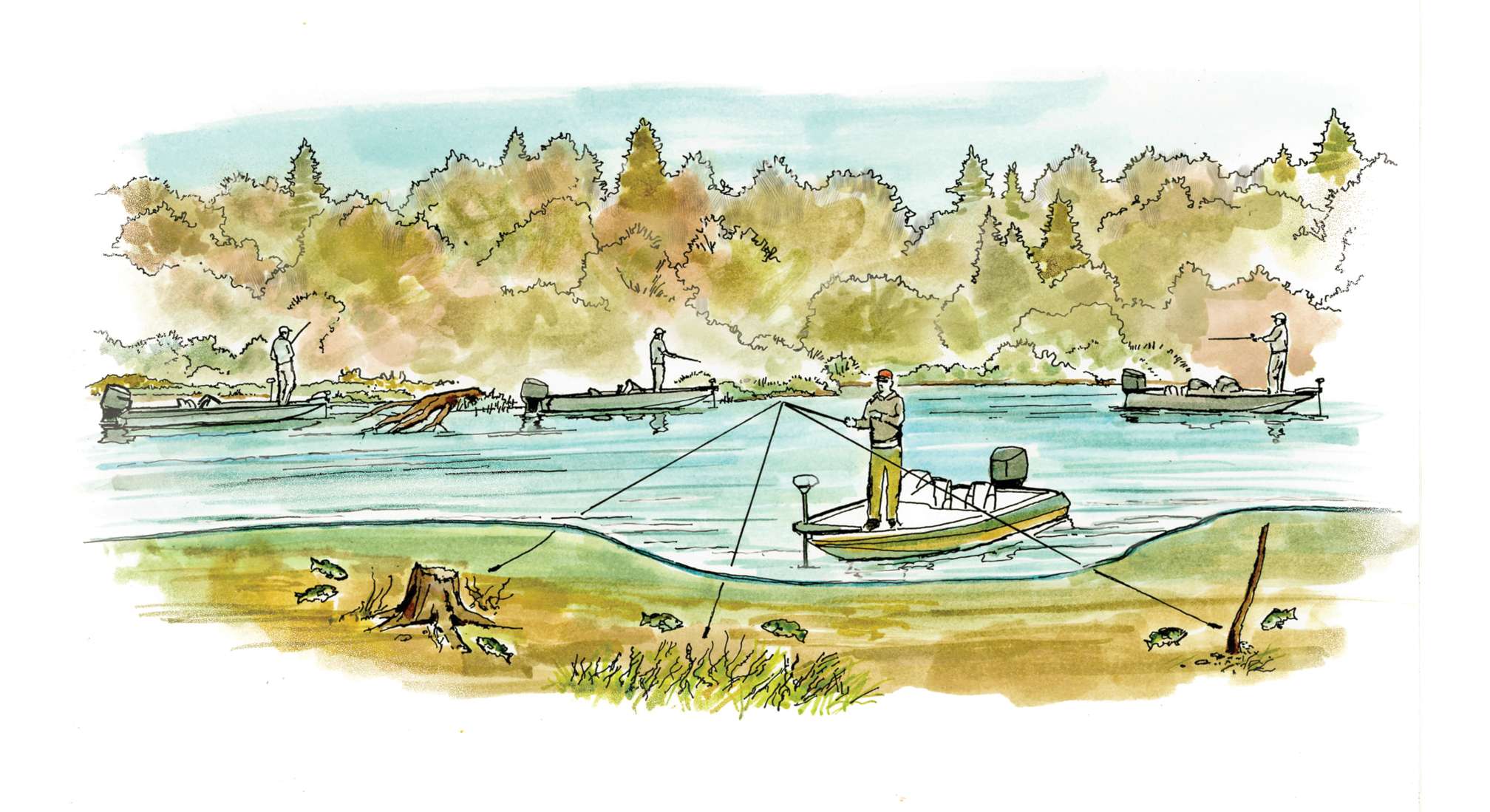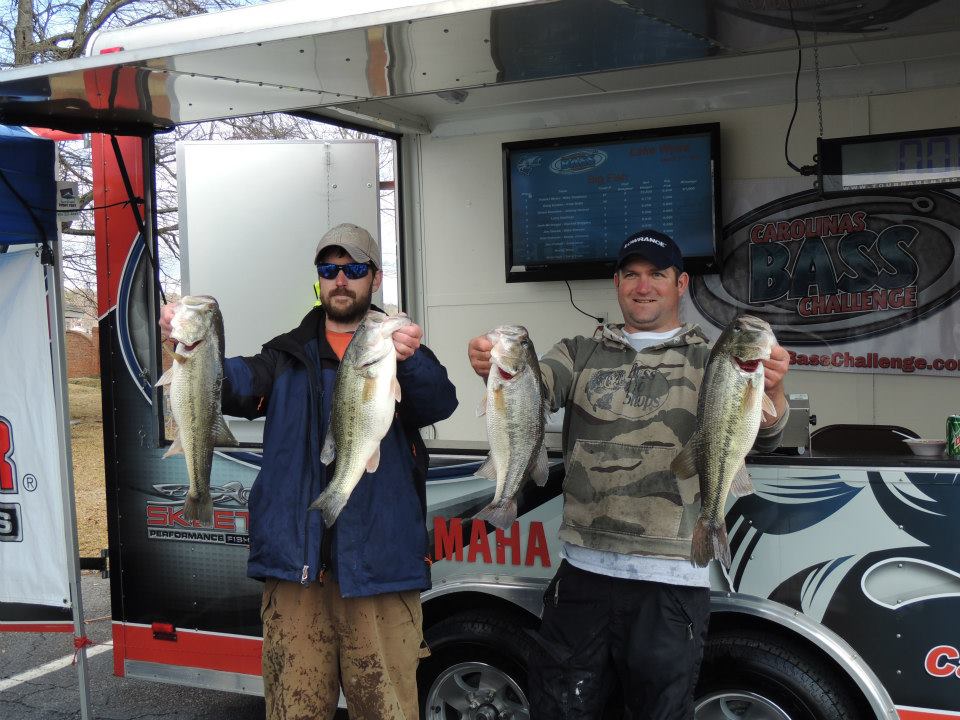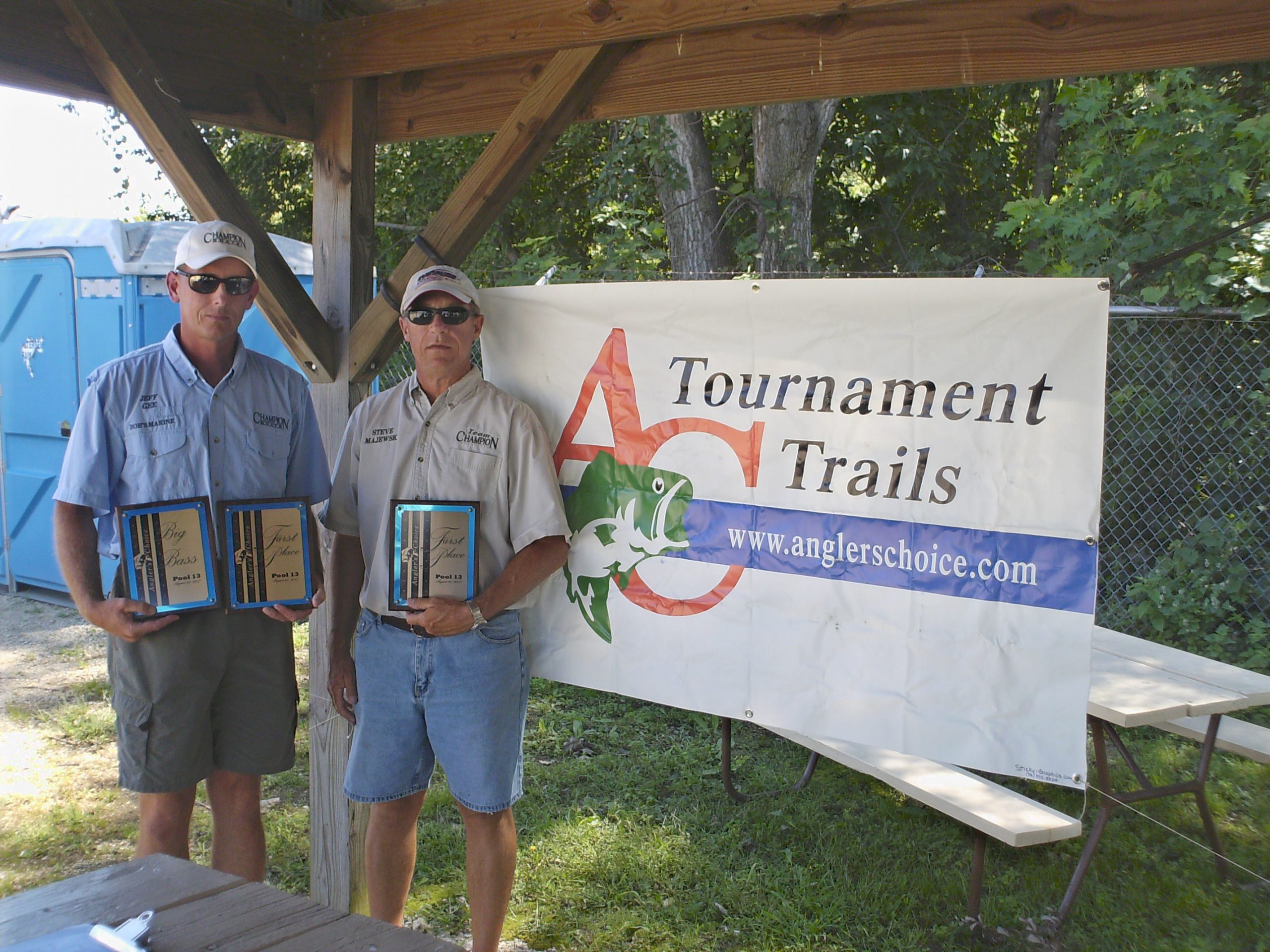
How many times has this happened to you: You drift off to sleep and dream of a misty, untouched stretch of bank, a place where the plop of a topwater ripples in serene circles across an unbroken surface. A hidden place where a heron watches. A secret place where the hawk circles. A magic place where big, hungry bass never turn down an easy meal.
You wake up the next morning, blast off for the tournament and immediately swallow a giant pill labeled “Reality.” Your pristine bank is suddenly awash in boat wakes – seems other teams went to bed with the same dreams. You’re behind two other boats. You don’t want to lose your starting spot, and you’re worried your second spot is covered up, too. Ugh!
The situation is all too common, whether you’re fishing local, regional or national events. And it’s only getting worse. Modern electronics like Humminbird Side Imaging and Lowrance StructureScan leave little mystery to the lake’s bottom. The information pipeline quickly reveals concentrations of fish, and the hordes of boats soon follow. More than ever, tournament success demands a willingness to fish behind boats, along with the positive mental attitude that you can and will catch fish behind those boats.
To help B.A.S.S. members catch more fish behind others, B.A.S.S. Times talked with a few of the nation’s top teams and asked: How do you catch fish behind others and win within the crowd?
Tim Hurst and Mark McCaig: hunt the hunted
When you talk about a busy piece of water, it’d be tough to find a busier playground than Alabama’s Logan Martin Lake. This Coosa River impoundment is littered with docks, cuts and creeks and hosts huge numbers of tournament anglers throughout the year. Anglers generally know where the fish are, and the winners almost always face crowds and pressured fish.
Tim Hurst and Mark McCaig fish with the Sylacauga Marine Big Bucks Bass Trail, among other regional trails, and they are one of a handful of teams in the area that consistently finish in the money. When their area gets covered up they turn their boat into a tree stand and get to hunting. In other words, they sit quietly and thoroughly fish the area.
Hurst explains, “My opinion is that bass fishing is a lot like deer hunting: If there’s noise in the area, you might see a small buck, but that big buck isn’t coming out. And I think that big bass are a lot more aware of their surroundings than smaller fish are, and the big bass won’t come out if there’s a lot of noise. That’s why if we’re in a crowded stretch, we generally won’t fish right in line with the other boats. We’ll back off a bit, use the Power-Poles more than the trolling motor and fish the area thoroughly.”
It’s Hurst’s theory that even if big bass are conditioned to ignore big-motor or pleasure-boat noise, they could still have a highly negative association with trolling-motor noise. The trolling motor might generally signal a coming intrusion into a resting area, the predictable sight of big-pound-test line or an obvious artificial. The lack of trolling-motor noise in a heavily fished area might thus minimize negative moods.
“All it takes is someone getting a little too close to the grass or piece of wood and then hitting that electric – I think that makes the fish in the area extra cautious,” Hurst adds. “That’s where the Power-Poles come in. They keep you from washing everything out. A lot of other anglers haven’t figured that out yet.”
Hunter Hicks and Mike Stephens: beat a different drum
 The Carolina Bass Challenge is a top regional trail that travels the rounds of famous and highly pressured waters in both North and South Carolina. Hunter Hicks claimed victory twice in 2013 with partner Mike Stephens at highly contested stops at Lakes Murray and Wylie – proof positive the duo can dance in and among the crowds.
The Carolina Bass Challenge is a top regional trail that travels the rounds of famous and highly pressured waters in both North and South Carolina. Hunter Hicks claimed victory twice in 2013 with partner Mike Stephens at highly contested stops at Lakes Murray and Wylie – proof positive the duo can dance in and among the crowds.
According to Hicks, who calls Wylie home, it simply comes down to the study of other boats and the mental confidence to get right into the mix. The team routinely watches other boats to study what they’re throwing and how they’re throwing it. It’s not a copycat quest. In fact, it’s the opposite. The duo want to distance themselves from other presentations and throw something different from everyone else.
Hicks notes, “If you’re not comfortable fishing behind people at Wylie, then you won’t have any place to fish. It honestly doesn’t bother me at all, and that’s because it doesn’t matter if there’s a person in front of you. If you fish it differently, you can catch fish they left behind.
“The choice of presentation all depends on the time of year. For instance, in winter, if you’re throwing an Alabama Rig, maybe you work it a touch deeper than everybody else. If they’re fishing in 15, you fish in 20. In spring, if everyone’s fishing up against riprap, you could be fishing the 5 feet of water in front of the riprap. If you’re fishing a jig on a dock, you know that everyone will be hitting the main points and they’ll be charging up and around the dock. But if you can take your time, stay back and drift in, then get further back up under the dock than anybody else, you’ll have a chance at fish that will still be in their native state and that not everybody can reach. We also threw a lot of little spoons this year out deeper, which was different, and we caught a lot of fish doing that.”
It’s no coincidence that Hicks agrees with Hurst that trolling motor noise can be a no-no. And although it can’t be totally eliminated, Hurst prefers to run his electric on constant low, rather than starting and stopping, which can create bracket clangs, shaft creaks and startup water bursts.
Martin Elshout and Mark Price: set up camp
Probably 95 percent of the fishermen out there simply can’t stand to sit and fish, which is why the approach can be so effective against crowds. Martin Elshout and Mark Price out of Ruston, La., know it all too well. And that’s why the team continues to cash checks in Fishers of Men events in and around the Toledo Bend area.
The Bend is a power fisherman’s dream. Cover, water and big fish make it one of the best lakes in America. But it’s also one of the most heavily fished lakes, and like anywhere else, money fish are most often concentrated in select areas. That’s when Elshout and Price break out the tents and set up camp.
Elshout says, “We sure don’t mind fishing behind somebody who’s catching them, because that means they’re biting, and we know we’ll catch our share. But so often you see guys come through, blow through an area quickly and not catch any. If we’ve got confidence in the area, we’ll spend some time there. We’ll wait them out until they bite, or maybe fine-tune it a little bit.”
The subtle part of the success formula comes from their understanding that angler traffic can reposition fish. The fish are in a particular area for a reason, but they do react to traffic. That’s why it’s important to back off a bit, camp out and see what the fish want and where and how they want it.
Elshout explains, “We mostly fish shallow, and a lot of times we’ll find that fish will still be in an area with a lot of traffic, but they might drop off to a little deeper water because of the pressure. That’s where our plastics and jigs come into play a bit more. You might not be catching any, and the boat in front of you might not be catching any, but they’re going to bite sometime during the day. That can come back and hurt you if they never bite, so we always try to have four or five places that we hit hard and fish real thoroughly.”
When asked, Elshout revealed that his No. 1 pressure bait is a Texas rigged Zoom Speed Craw, which has won the team various championships in and amongst some of the best jig pitchers in the region.
Steve Majewski and Jeff Gee: seek the invisible
 Rivers can bear witness to tremendous fishing pressure, especially during the spring, because bass tend to group into predictable backwater areas. Some backwaters have single access points, with a line of boats waiting their turn to move in. Anglers have no choice but to jump onto the merry-go-round, but savvy sticks like Steve Majewski and Jeff Gee have a strategy.
Rivers can bear witness to tremendous fishing pressure, especially during the spring, because bass tend to group into predictable backwater areas. Some backwaters have single access points, with a line of boats waiting their turn to move in. Anglers have no choice but to jump onto the merry-go-round, but savvy sticks like Steve Majewski and Jeff Gee have a strategy.
This longtime U.S. Angler’s Choice team hails from the Sterling, Ill., area and most often fishes the Mississippi River, where the backwater bite dominates. They routinely fish behind lines of boats and within crowds, yet have won three boats and a few championships within their region.
“A lot of our success comes from watching what the other guys are doing, then doing something different,” Majewski said. “If they’re flipping, we might throw a swimbait. If we’re moving down a bank quickly, we might set up and pick the area apart with a tube or jig. But we also prepare for the crowds during our pre-fish.”
Such prep is essential. The duo might already know where the fish are, and they’re experienced enough to know how to catch them under normal conditions. But in anticipation of the tournament, they seek out different targets.
Majewski explains, “Typically we’re fishing 3 feet deep or less, because we’re in backwaters. I think a lot of times guys tend to fish to targets that are visible. But we try to fish cover that’s not visible. A great example is the spring, when everyone’s fishing flooded cover. In practice, we’ll try to spend time finding cover off the bank that isn’t visible – maybe a stump, an isolated stickup or a small patch of grass the size of the boat. Any of those could hold a good fish and not get bothered.”
In essence, the odds flip. Fishing pressure can turn high-percentage targets into low-percentage ones. So savvy teams can flip the odds back in their favor by working hard in practice to find adjacent or nearby hidden-cover options.




